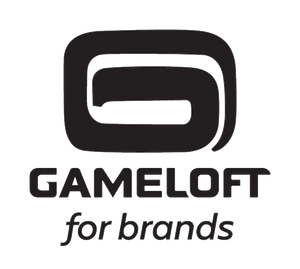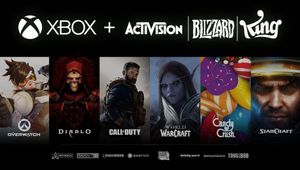
An eSporting Chance: The Mobile eSports Opportunity

The eSports market has seen rapid growth in recent years, as more people experience the fun and excitement of watching professional gamers compete against each other, and, once they’ve tried it, find that they’re hooked. In fact, there has been a huge jump in live viewership numbers for mobile eSports, from 15.3m hours in 2018 to an incredible 98.5m hours in 2019 – an increase of more than 600 per cent. The current COVID pandemic has also fuelled eSports’ growth. It’s led to an increase in the number of people playing mobile games, and as many traditional sports have been delayed or suspended completely, it has led many new gamers to investigate eSports, both as players and spectators.
And if anyone thinks eSports players are in it for fun, think again – it’s a very serious and competitive business. According to a report from Niko Partners, ‘Evolution of Mobile eSports for the Mass Market’, $161.3m (£121.2m) was distributed in pro eSports prize money in 2018.
The action plays out on two channels: traditional PC and console; and mobile. While growth across both channels is good, with figures from Business Insider Intelligence forecasting that total eSports viewership will almost double from 335m in 2017 to 646m in 2023, of the two, mobile is undoubtedly the rising star. According to the Niko Partners report, in 2018, mobile eSports games generated $15.3bn in revenues globally, just shy of the $16.1bn generated by PC eSports titles. That $15.3bn figure meant that global mobile eSports game revenues accounted for 25.2 per cent of total mobile game revenues. And in the first half of 2019, that proportion increased to 26.2 per cent. The same report puts the number of mobile gamers in the world in 2019 at 2.53bn, compared to 1.5 bn playing on PCs and consoles.
And according to another Niko Partners report, ‘Rise of the player-fan: The Growing Opportunity of Mobile eSports in Asia, by 2019, mobile eSports games generated $19.5bn in revenues globally – an increase of 27.5 per cent in just one year.
One example of the popularity of mobile eSports games is Gameloft’s partnership with ESL for our Asphalt Tournament series. For the Season five finals, held on 11th July this year, we saw an increase in Peak CCU (concurrent users) of 551 per cent from Season four (staged on 20th March 2020) to 6,677. Hours watched were 296 per cent up at 7,751 hours, even though the live broadcast time was only 10 minutes longer than Season four, at three hours 52 minutes.
Growth factors
The factors behind the growth in mobile eSports revenues are many and varied. In mature markets, most adults and teenagers own a smartphone, while in emerging markets, smartphone penetration rates are rising fast. According to Statista, the current number of smartphone users in the world is 3.5 billion, which means that 44.85 per cent of the world’s population – of all ages – owns a smartphone. This figure is up considerably from the 2016 figure of 2.5 billion, or 33.58 per cent of that year’s global population.
And when people get a smartphone, playing games is one of the things they tend to use it for. In Africa, for example, 70 percent of smartphone users play mobile games, while in LATAM, it’s 60 per cent. And these are not just the stereotypical gamer, but people of all ages and demographics. In fact mobile gamers skew towards better educated and higher incomes. The vast array of game genres available, from puzzles to action games, means that mobile games appeal to a very wide audience.
eSports have also been championed by celebrities from the world of sport and music, including Michael Jordan and Drake to name but two, and they have been afforded credibility by the number of real sporting teams buying eSports franchises. These include Arsenal, Paris St. Germain and FC Schalke O4 football teams; Miami Heat and Golden State Warriors NBA teams; and the New York Mets, New York Yankees and Texan rangers MLB teams.
Technology is playing a part too. As more countries roll out faster, higher-bandwidth 5G networks, playing, and watching others play games on mobile, even when you’re not on a wi-fi network, a much more appealing proposition, delivering high definition images, and making issues of lag and latency redundant.
The mobile eSports audience
According to research from Gaming Street, the median age for a mobile eSports gamer is around 29, with 40 percent of the audience aged between 25 and 34. What unites the mobile eSports audience is that they are enthusiastic, passionate and engaged with the games and the ads that accompany them, in a way they are not with traditional advertising. eSports is very much community-driven. The top players make themselves accessible to their audience, and as eSports moves more into the mainstream, they are becoming celebrities in their own right, opening up sponsorship opportunities for brands.
Advertising in mobile eSports games
Advertising in mobile eSports games takes many forms. I’ve already mentioned the opportunity to sponsor an individual player or a team. When a tournament is broadcast, there are sponsored ad breaks, just as you would see for the broadcast of a live soccer or baseball match. eSports are also big on live events. While these are obviously not possible right now, when they are running, they attract huge audiences. The 2019 Free Fire World Cup in Bangkok, for example, was attended by over 15,000 eSports fans, and there are obviously branding opportunities at the venues for these big tournaments.
But for advertisers looking to engage with eSports fans at a time that suits them, non-interruptive ads, inserted natively into the game, probably offer the best opportunity. In our Asphalt 9 racing game, for example, there are branded in-game screens; branded skins for the cars; sponsored powerups and vouchers for the players; and branding opportunities on the virtual billboards that surround the track. And the genre of the game makes it an extremely brand-safe environment for advertisers, compared to some others out there.
And when you hook-up directly with a games publisher like Gameloft, you can activate across multiple leagues and competitions at a local, national or global level, depending on the scale you need and the type of engagement you are seeking.
And it works. In a study carried out by Reach3, more than two out of five gamers who said they had looked up an advertiser after being exposed to an eSports sponsorship, and 41 per cent of respondents said they had a better impression of the brand or company as a result of an eSports activation.
Everyone knows that advertisers follow the eyeballs. It’s how internet giants like Facebook and Google built their businesses, patiently building an audience first, then monetising it later. In the world of mobile eSports, that audience is ready and waiting.
Originally article published on Mobile Marketing Magazine.













